A closer look at Android 4.2, the latest treat in the candy jar [Review]
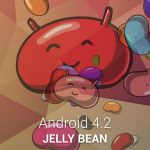
Today, Google launches Android 4.2 Jelly Bean. Expectations run high for the latest member of the green robot family, even though it's less of a major upgrade and more of a here-and-there improvement from its predecessor. Can it live up to the excitement?
At a first glance, the second version of Jelly Bean is just that...the second version of Jelly Bean. It looks and feels very similar to its predecessor. I'm an avid Android modder, and a new operating system has to live up to pretty high expectations. So rather than write a boring review presenting some of the things that you already know, I will also assess these changes in comparison to custom distributions such as AOKP Jelly Bean Milestone 1, and CyanogenMod 10 nightly.
Android 4.2 rolls out to Galaxy Nexus, update file available for Nexus 7

The wait is finally over! Google launches Android 4.2 Jelly Bean today alongside the new Nexus lineup with a treat in store for current Galaxy Nexus and Nexus 7 owners as well. The latest version of Android is rolling out over the air (OTA) for the year-old smartphone, with a manual update available for the ASUS-made tablet as well.
The Android 4.2 Jelly Bean OTA update, build number JOP40C, is available for the Galaxy Nexus HSPA+ sold via Google Play (codename "takju"). The point oner comes in at a rather small 74.3MB and, besides the announced improvements, at a first glance the update delivers a new baseband (I9250XXLH1 from the previous I9250XXLF1) and kernel (dated November 2) as well.
Who will buy Google Nexus 4?
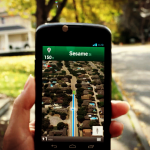
Tomorrow, Google Nexus 4 goes on sale, along with the new Nexus 10 tablet. The question: Who will buy? I've got answers.
Six days ago, I posted poll "Will you buy Nexus 4?" Early responses are quite surprising. Exactly 53 percent of respondents say they will buy the smartphone "as soon as available", with another 15.4 percent planning to do so "within 3 months of release". Say, what? Yes, that's my reaction, too. But the phone has received rave reviews from those publications receiving one (we're on the wait list). The results contrast strikingly with our iPhone 5 buying poll. More than 70 percent plan to buy Nexus 4 vs 33 percent the Apple mobile.
RecoverX brings custom recovery to an impressive number of Android devices

The custom recovery plays an important role in Android modding by allowing users to install new ROMs or to perform full device backups. But finding and installing the right one can be a problem, which is where RecoverX comes into play. It comes with an impressive list of supported devices.
RecoverX offers a step-by-step guided process in order to install a custom recovery. The program only requires the brand and name of the Android smartphone or tablet, and it will display a list of available options. On a Google Galaxy Nexus, RecoverX can install ClockworkMod Recovery or ClockworkMod Touch Recovery, but depending on the device Amon-Ra Recovery and/or xRecovery is available.
Control Panel for Android brings Jelly Bean 4.2 quick settings to older devices
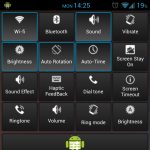
Tomorrow Google will launch Android 4.2 on the Nexus 4, 7 and 10 with nifty new features such as notification panel quick settings. With similar functionality the latter can now be experienced on older versions of the popular operating system through Control Panel for Android.
Instead of adding another button in the notification panel or popping up after a two-finger swipe, Control Panel for Android delivers quick settings rather differently. The app is pinned in the notification panel and quick settings is triggered with a single tap on it. But the number of available toggles makes up for the quirky triggering method. Using Control Panel for Android users can control Wi-Fi, Bluetooth, sound, brightness, auto-rotation, screen stay or haptic feedback among other features.
The post-PC era already is over

That was fast, if it ever was. Don't blink or the so-called PC era will pass you by. For years, I've called it the cloud-connected device era because of the deeper meaning: Context. But more appropriately, the new epoch is contextual computing, which really extends a transition underway since the World Wide Web opened to the masses about 20 years ago. During the two earlier computing eras, mainframes and PCs, location defined the user. During the contextual computing era, the user defines location. If you listen to analysts obsessed with selling services to enterprises or companies like Apple, post-PC is all about devices. It's anything but.
Context is everything today. I started writing about the concept circa 2004, borrowing from my boss of the day -- Michael Gartenberg. The concept is simple: People are satisfied with what they've got on hand. In context of the airport, a hand-held game console is good enough, while at home the person prefers Xbox and big-screen PC. But because of the cloud connected to an increasing number of mobile devices, context is a much bigger, broader and badder technology trend.
Bits of Android 4.2 Jelly Bean are awesome
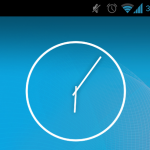
Earlier this week I wrote about the Android 4.2 Transformation Pack for the Galaxy Nexus and it got me wondering. As a CyanogenMod 10 user, I get access to better Camera or Clock apps compared to stock Jelly Bean, so what could I possibly gain by installing some of the Nexus 4 apps or wallpapers?
Curiosity got the best of me, and I installed the new Camera, Clock, Keyboard and Gmail apps, and for the sake of changing looks I got the new wallpapers as well. This is not Android 4.2, rather a taste of what will come, but so far I like the new bits. There is an added touch of elegance in the new apps, which should give the new operating system a more polished look and feel.
Android 4.1 Jelly Bean coming soon for Motorola Droid Razr M
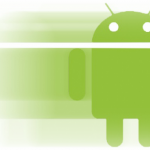
Little more than two months ago Motorola introduced the Droid Razr M for Verizon Wireless running Android 4.0 Ice Cream Sandwich. In October, a leaked ROM surfaced, but today the big red announced the real deal -- Jelly Bean is coming with all its bells and whistles to the Droid Razr M.
The significant software upgrade bears the "98.12.4.XT907.Verizon.en.US" moniker and it comes in at 254.1MB. Users should expect Android 4.1 Jelly Bean with the usual Motorola add-ons and Verizon-specific apps. Some of the most noteworthy changes include better voice search capability thanks to Google Now, revised notifications panel and improved responsiveness due to Project Butter. Users should also expect faster GPS lock-in times, more frequent Contacts sync and instantly-updating circle widget, among other improvements. There is also a new version of QuickOffice as well Isis Mobile Wallet support and new Video Calling Portal app.
Because of Sony, Android upgrades for all devices may arrive sooner

After Google dropped the Sony Xperia S from the Android Open Source Project, AOSP Technical Lead Jean-Baptiste Quéru announced that the Mountain View, Calif.-based corporation will improve the tools required for manufacturer AOSP contributions. The intended purpose is to help manufacturers upgrade to new Android versions faster, and facilitate their contributions to the AOSP tree.
The revised tools, in short, make it easier for manufacturers to organize device-specific files in the same manner that Google does.
Google drops Sony Xperia S from the Android Open Source Project [Update]
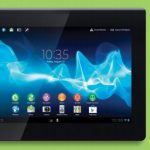
Just over two months ago Sony announced that it would back-up the efforts of Android Open Source Project (AOSP) Technical Lead Jean-Baptiste Quéru (JBQ) in porting stock Android to the Xperia S tablet. Those efforts have changed somewhat, as the Japanese manufacturer has announced its intentions to take the lead on the project starting with Jelly Bean MR1.
Sony says that Quéru is pleased with the outcome of the Xperia S AOSP experiment, but in order to keep things running, the company has moved the project to a Sony git on GitHub. The problem apparently is on Google's end, as it cannot maintain non-Nexus devices in the long run, likely due to limited resources. As it is, the Xperia S boots stock Android with reduced functionality including SD card, sensors and Wi-Fi.
DARPA adopts Android-based battlefield helmet cameras

DARPA, or the Defense Advanced Research Projects Agency as it is technically known, has a history of turning seemingly crazy ideas into reality. Now this branch of the Defense Department pursues a new camera/sensor system designed to aid soldiers' vision on the battlefield.
The agency describes it this way: "As missions shift, however, and warfighters are required to work in smaller teams and access more remote locations, it is technology that must adapt if it is to remain useful. Desirable features for many new man-portable systems include small size, light weight, minimal power consumption, low cost, ease of use, multi-functionality and, to the extent possible, network friendliness".
Here's what I wrote about Android on its big day four years ago

Searching through my old Microsoft Watch posts for one thing, I found another -- my Sept. 23, 2008 news analysis "How Android hurts Microsoft". I wanted to find some of my past posts about contextual computing, and you can read more about that soon. For today, this story uses the lens of the past to look at the present.
I take lots of flake from commenters, whether directly on posts or blogged by others elsewhere, about my stories. Many accuse me of idiot perspective and being clueless. But often my seemingly brash analyses at the time, peering into future implications, are generally right. If you look at the totality of my writing, there is consistency of thinking that rightly anticipates trends. Abrasive writing style, provocative headlines and forceful argument puts off some people, especially those who don't like change or embracing new ideas. Occasionally I write seemingly contradictory perspectives, trying to look a things dimensionally rather than flatly. The Microsoft Watch post is one example of many that demonstrates what I mean.
Microsoft Office for Android and iOS is a Trojan Horse

I simply can't stop laughing about the newest mobile Office rumors. This is better than stand-up comedy because the punchline is just so unbelievable there are seconds of silence before the bellowing roar. Microsoft's idea of a -- imagine my forefingers raised to make mock quotation marks -- mobile Office app is essentially a document viewer. Oh yeah, like I really need one of those, or you.
Yet the rumors make sense, because the approach is oh-so-predictable Microsoft and absolutely what executives should plan. Real Office on either platform is a bad idea. Yeah, just go ahead, make full-blown Office for Android and iOS and feed yourself to the post-PC dogs, leaving behind some mindless, decaying creature from The Walking Dead or your favorite Resident Evil game (or movie). The company's objective is bigger, and actually quite believable: Establish a beachhead for Microsoft account-linked cloud services on competing platforms.
Samsung Galaxy Note gets Android 4.1 Jelly Bean via leaked ROM
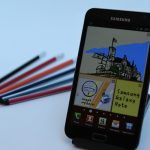
A little more than a month ago, Samsung announced the Galaxy Note Android 4.1 Jelly Bean update for the South Korean market, but didn't give any dates for an international release. So if you are not the type that likes to wait for silly things like official releases, there is now a leaked ROM available for the popular smartphone.
The leaked Android 4.1 Jelly Bean ROM for the Galaxy Note is designed for the international model (codename N7000) and will not work on carrier-specific versions. The build is dated October 9 and delivers Android 4.1.1, build number JRO03C. Users can expect a number of new features under the hood such as Google Now, but based upon some early tests, it's not going to break any speed records. The leaked ROM also comes with S Pen air-view, which displays a cursor under the stylus, and the same lockscreen featured in the newest iterations of TouchWiz.
Miro Video Converter 3.0 formats content for Android and iOS devices

There are numerous video formats to choose from and you will at some point encounter a file that is not in the format you need to play back on a particular device. If you own an Android or iOS device, Miro Video Converter is on hand to help you to convert almost any video file into a format that can be played back on your mobile device -- most importantly, using the settings and resolution you feel most appropriate. Miro Video Converter 3.0 adds a number of important new options, including batch processing for the quick conversion of multiple files.
Batch conversion is the killer feature of the updated app, but it is far from being the end of the story. There is also a redesigned UI to work with, and you may be pleased to hear that it appears to be in no way inspired by the look of Windows 8. While the program can be used to convert video ready for all sorts of different purposes, it is particularly well suited for converting footage ready for viewing on mobile devices. The plethora of different screen sizes and aspect ratios is reflected in the range of formatting options that are available in the latest version of the program.
Recent Headlines
© 1998-2025 BetaNews, Inc. All Rights Reserved. Privacy Policy - Cookie Policy.